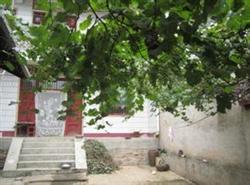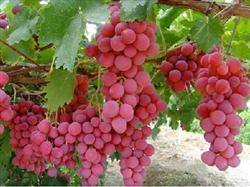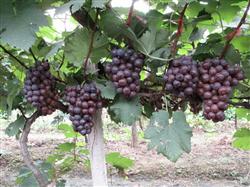Sunshine disease occurred in high temperature grapes.

Harmful characteristics: when sunburn occurs, the fruit surface produces light brown nearly round spots, the edge is not obvious, the fruit surface shrinks at first and then gradually sinks, and the serious ear becomes dried fruit. The young parts of tendrils and new shoots that have not yet been lignified can also be damaged by sunburn, causing tip tips or tender leaves to wilt and turn brown. The cause of the disease: it is usually infected from mid-June to early July (ear coloring maturity), which mostly occurs on the ear exposed in the sun, due to the lack of water in the tree body and the lack of water supply to the fruit. Sunburn will occur when the root system does not absorb enough water, the leaf evaporation is large, and the osmotic pressure increases, resulting in the imbalance of fruit water. Sunburn also occurs when the root system retts or burns the root. Large grain varieties are prone to sunburn in production. Sometimes when the ear in the shade is moved due to pruning, topping, binding vines, or when the plant is unable to adapt to a sudden rise in temperature, sunburn will also occur in the new shoots and fruits. Prevention and control methods: strengthen cultivation management: appropriate deep fertilization to induce deep root group development, enhance tree potential, improve stress resistance; appropriate close planting, the use of scaffolding, so that the ear in the shade; prevent waterlogging or excessive fertilization root burning phenomenon; in the high temperature disease period, appropriate irrigation, evaporation should be timely watering to reduce plant temperature and avoid sunburn. Spraying fertilizer to reduce temperature: in the high temperature weather after overcast and rain, 0.2% potassium dihydrogen phosphate solution or 5% plant ash extract or 27% high fat film emulsion 80-100 times were sprayed on the leaves and ears for 2-3 times, which had a certain preventive effect on sunburn. The above is for reference only.
- Prev

Control methods of grape diseases in rainy season
Grape downy mildew, white rot, anthracnose and other diseases have a high incidence in summer. Downy mildew can lead to fallen leaves, withered branches, rotten fruit and even death. Therefore, the China Agricultural Technology Network reminds you to strengthen the management of vineyards and prevent diseases in time in the rainy summer season. 1. Clear the garden: if in the vineyard.
- Next

Measures to improve the Commodity of Grape products
1. Ear fixing: leave a good ear with correct spike shape, uniform fruit setting and drooping posture. 2. Panicle shape arrangement: on the basis of conforming to the natural shape of varieties, the panicle shape of the same varieties in the whole garden should be basically the same. 3. Elongated inflorescence: for varieties with higher fruit setting rate, when the inflorescence is 7-10 cm long.
Related
- Moge, come on! The staff of the peasant association in the producing area of cantaloupe were frightened when the crowd gathered.
- Causes and Solutions of low Fruit setting rate of Apple
- Symptoms and control measures of passion fruit virus disease
- Fruit growing lesson: how do apple orchards keep high yields?
- Can you build orchards in the mountains? What are the pros and cons?
- How to manage the coloring period of Crisson grape?
- This paper introduces the processing technology of two kinds of fig products.
- How much is a month for retired teachers in rural areas by 2020?
- How can strawberry planting increase sugar content? We should pay attention to management in many aspects.
- What are the cultivation techniques on how to improve the yield of golden fruit?

